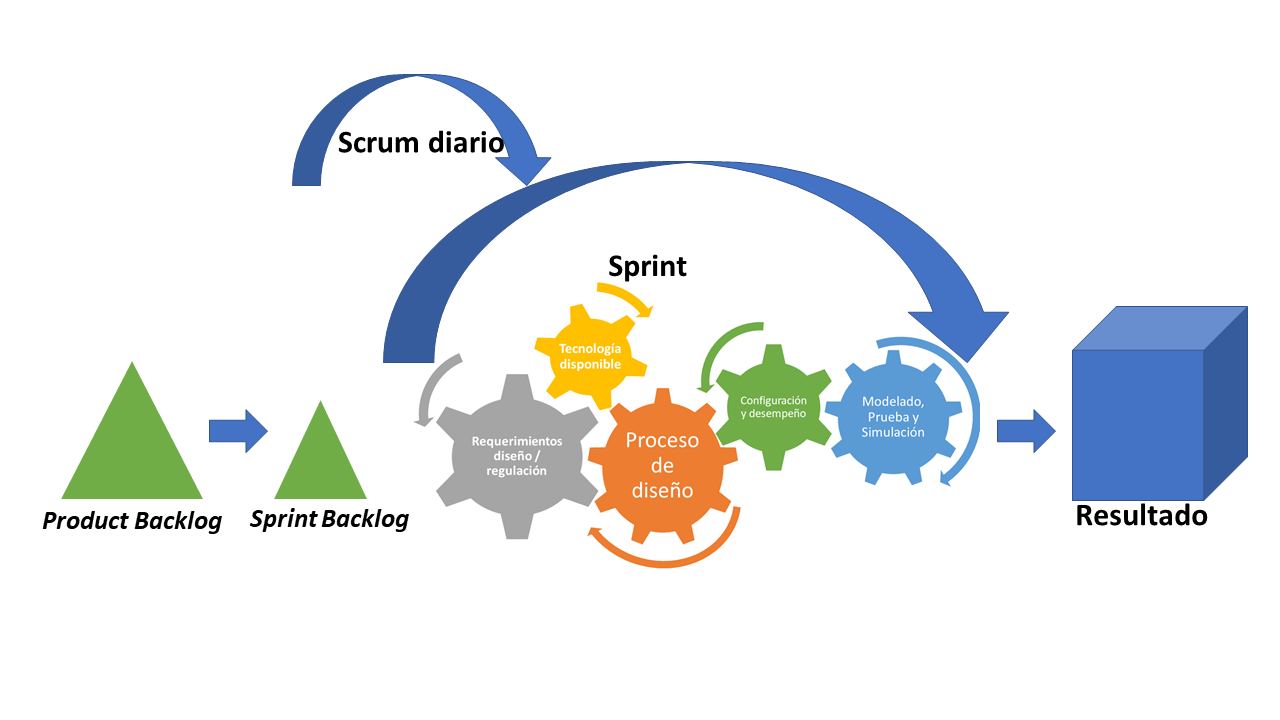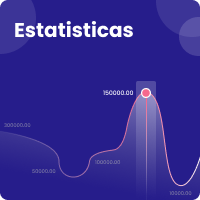Uma proposta para a aplicação de métodos ágeis no projeto conceitual de um drone
DOI:
https://doi.org/10.18667/cienciaypoderaereo.671Palavras-chave:
Desenvolvimento de produto, projeto conceitual, drone, planejamento de projeto, ScrumResumo
Quando um novo produto aeroespacial é desenvolvido, é essencial avaliar o desempenho. Os drones são considerados um produto nobre com enorme potencial de impacto na indústria da aviação nos próximos anos. O projeto de um drone certificado é uma atividade complexa, que requer a interação de várias áreas do conhecimento e é normalmente considerada em fases que variam da viabilidade à produção. Este artigo propõe o uso de metodologias ágeis para o projeto de design conceitual de um drone, dado que diversos estudos mostraram o potencial de enfrentar desafios similares usando métodos semelhantes ou análogos usados no desenvolvimento de software, como metodologias ágeis. O Scrum foi o método ágil selecionado para ser adaptado ao design do drone, a fim de gerenciar melhor a complexidade do produto e as alterações do processo. Por último, é apresentada uma proposta para a aplicação desse método, mostrando as diferentes etapas do projeto.
Downloads
Referências
Aftab, S., Nawaz, Z., Anwar, M., Anwer, F., Bashir, M., & Ahmad, M. (2018). Comparative Analysis of fdd and sfdd. International Journal of Computer Science and Network Security, 18(1), 63-70. http://paper.ijcsns.org/07_book/201801/20180108.pdf
Albeaino, G., Masoud, G., & Franz, B. (2019). A systematic rewiev of unmmaned aerial vehicle application areas and
thecnologies in the aec domain. Journal of information technology in construction, 24. https://itcon.org/papers/2019_20-ITcon-Albeaino.pdf
Anderson, J. D. (1999). Aircraft Performance and Design. wcb/McGraw–Hill.
Anwer, F., Aftab, S., Waheed, U., & Muhammad, S. (2017). Agile Software Development Models tdd, fdd, dsdm, and
Crystal Methods: A Survey. International Journal of Multidisciplinary Sciences and Engineering, 8(2), 1-10. https://www.researchgate.net/publication/316273992_Agile_Software_Development_Models_TDD_FDD_DSDM_and_Crystal_Methods_A_Survey
Baguley, P. (2018). Agile development and Cost of uav.
Benassi, J. L., Amaral, D. C., & Ferreira, L. (2016). Towards a conceptual framework. Journal of Operations & Production Management, 36(2), 200-219. https://doi.org/10.1108/IJOPM-11-2013-0511
Blooshi, M. A., Jafer, S., & Patel, K. (2018). Review of Formal Agile Methods as Cost-Effective Airworthiness Certification Processes. Journal of Aerospace Information Systems, 15(7), 1-14. https://doi.org/10.2514/1.I010601
Borda, J., Trabasso, L., & Pessoa, M. (2019). Agile Management in Product Development. Research-Technology Management, 62(5), 63-67. https://doi.org/10.1080/08956308.2019.1638488
Ciric, D., Bojan, L., Gracanin, D., Palcic, I., & Zivlak, N. (2018). Agile Project Management in New Product Development and Innovation Processes: Challenges and Benefits Beyond Software Domain. Conference: 2018 IEEE International Symposium on Innovation and Entrepreneurship(tems-isie), 1-19. https://doi.org/10.1109/TEMS-ISIE.2018.8478461
Conforto, E., Salum, F., Amaral, D., Silva, S., & Almeida, L. (2014). Can Agile Project Management Be Adopted by
Industries Other than Software Development? Project Management Journal, 45(3), 21-34. https://doi.org/10.1002/pmj.21410
Darrin, M., & Devereux, W. (2017). The Agile Manifesto, design thinking and systems engineering. Annual IEEE International Systems Conference (SysCon), 1-5. https://doi.org/10.1109/SYSCON.2017.7934765
Della Vecchia, P., De Marco, A., Stingo, L., & Nardone, G. (2016). The Agile Method Applied to Aircraft Design at Univeristy of Naple. 6th easn International Conference On Innovation in European Aeronautics Research.
Dickison, T., & McIntyre, R. M. (1997). A conceptual framework of teamwork measurement. En Brannick, M, Salas, T., Team Performance Assessment and Measurement: Theory, Methods, and Applications (pp. 19-43). Psychology Press.
Esposito, E., & Raffa, L. (2004). Evolution of the supply chain. 15th International Annual ipsera.
Fowler, M., & Highsmith, J. (2001). The agile manifesto. Software Development.
Ghimire, D., Charters, S., & Gibbs, S. (2020). Scaling Agile Software Development Approach in Government Organization in New Zealand. icsim ‘20: Proceedings of the 3rd International Conference on Software Engineering and Information Management, 100-104. https://doi.org/10.1145/3378936.3378945
Glas, M., & Seitz, A. (2012). Application of Agile Methods in Conceptual Aircraft Design. Deutsche Gesellschaft für Luftund Raumfahrt-Lilienthal-Oberth eV. https://www.dglr.de/publikationen/2012/281384.pdf
Glas, M., & Ziemer, S. (2009). Challenges for Agile Development of Large Systems in the Aviation Industry. Proceedings of the 24th acm sigplan Conference companion on Object oriented programing systems languages and aplications, 901-908.
Hassanalian, M., & Abdelkefi, A. (2017). Classifications, Applications, and Design Challenges of Drones: A Review.
Progress in Aerospace Sciences, 91, 99-131. https://doi.org/10.1016/j.paerosci.2017.04.003
Hodgkinson, D., & Johnston, R. (2018). Aviation Law and Drones: Unmanned Aircraft and the Future of Aviation. Routledge.
Huikkola, T., & Kohtamäki, M. (2020). Agile new solution development in manufacturing companies. Technology Innovation Management Review, 10(3), 16-23. https://timreview.ca/article/1333
Ivanis, D. (2009). Where Lean and Technology Meet. Boeing.com. https://www.boeing.com/news/frontiers/archive/2009/.../i_ca01.pdf
Kazenbach, J. R., & Smith, D. K. (1993). The discipline of teams. Harvard Business Review, 83(7), 111-120.
Koch, S. (2004). Agile principles and open source software development: A theoretical and empirical discussion. Lecture notes in computer science, 85-93.
Komarov, V. A., Borgest, N. M., Vislov, I. P., Vlasov, N. V., Kozlov, D. M., Korolkov, O. N., & Maynskov, V. N. (2011). Conceptual Aircraft Design. Samara State Aerospace University.
Krupa, G. P. (2019). Application of Agile Model-Based Systems Engineering in aircraft conceptual design. Aeronautical Journal, 123(1268), 1561-1601. https://doi.org/10.1017/aer.2019.53
Kupiainen, E., Mäntylä, M., & Itkonen, J. (2015). Using metrics in Agile and Lean Software Development–A systematic
literature review of industrial studies. Information and Software Technology, 62, 143 -163. https://doi.org/10.1016/j.infsof.2015.02.005
Lavallée, C. (2019). The eu Policy for Civil Drones: The Challenge of Governing Emerging Technologies. Institute for European Studies Policy Brief. https://core.ac.uk/download/pdf/200760322.pdf
Lee, J., Tan, H., Crandall, D., & Šabanović, S. (2018). Forecasting Hand Gestures for Human-Drone Interaction. hri’18: Companion of the 2018 acm/ieee International Conference on Human-Robot Interaction, 167-168. https://doi.org/10.1145/3173386.3176967
Luppicini, R., & So, A. (2016). A Technoethical Review of Commercial Drone Use in the Context of Governance, Ethics, and Privacy. Technology in Society, 46, 109-119. https://doi.org/10.1016/j.techsoc.2016.03.003
McDermott , C., & O’Connor, G. (2003). Managing radical innovation: an overview of emergent strategy issues. Journal of Product Innovation Management, 19(6), 424-438. https://doi.org/10.1111/1540-5885.1960424
Mulder, F., Verlinden, J., & Maruyama, T. (2014). Adapting Scrum Development Method for Development of Cyber-
Phisical Systems. Proceedings of tmce 2014, 19-23. https://www.researchgate.net/publication/262419522
Nawaz, Z., Aftab, S., & Anwer, F. (2017). Simplified fdd Process Model. Modern Education and Computer Science, 9(9), 53-59. https://doi.org/10.5815/ijmecs.2017.09.06
Panagiotou, P., Fotiadis-Karras, S., & Yakinthos, K. (2018). Conceptual Design of a Blended Wing Body male uav. Aerospace, Science and Technology, 73, 32-47. https://doi.org/10.1016/j.ast.2017.11.032
Panagiotou, P., Kaparos, P., Salpingidou, C., & Yaki, K. (2016). Aerodynamic design of a male uav. Aerospace Science and Technology, 50, 127-138. https://doi.org/10.1016/j.ast.2015.12.033Get
Pardessus, T. (2004). Concurrent Engineering Development and Practices for Aircraft Design at Airbus. Proceedings of the 24th icas Conference. http://icas.org/ICAS_ARCHIVE/ICAS2004/PAPERS/413.PDF
Parvez , A. M., & Toppur, B. (2019). Hybrid Agile Project Management Model for New Product Development in Aerospace. International Journal of Operations and Quantitative Management.
Raymer, D. P. (2012). Aircraft Design: A Conceptual Approach. American Institute of Aeronautics and Astronautics.
Rebentisch, E., Conforto, E. C., Schuh, G., Riesener, M., Kantelberg, J., Amaral, D. C., & Januszek, S. (2018). Agility
Factors and Their Impact on Product Development Performance. International Design Conference - Design 2018, 893-904. https://doi.org/10.21278/idc.2018.0236
Rohajawati, S., Rahayu, P., Akbar, H., Indria, S., & Sensuse, D. (2019). Implementing dsdm and oo Method to Develop Billing in Mental Hospital. Journal of Physics: Conference Series, 1566, 26-27. https://doi.org/10.1088/1742-6596/1566/1/012059
Roskam, J. (2004). Airplane Design. darcorporation.
Salvato, J., & Luplume, A. (2020). Agile Stage-Gate Management (asgm) for physical products. r and d Management. https://doi.org/10.1111/radm.12426
Schuh, G. (2012). Innovation Management—HandBook Production and Management. Springer.
Schuh, G., Dolle, C., Kantelberg, J., & Menges, A. (2018). Identification of Agile Mechanisms of Action as Basis for Agile Product Development. Procedia cirp, 70, 19-24. https://doi.org/10.1016/j.procir.2018.02.007
Schuha, G., Gartzena, T., Soucy-Bouchardb, S., & Bassea, F. (2017). Enabling Agility in Product Development through an Adaptive Engineering. Procedia cirp, 63, 342-347. https://doi.org/10.1016/j.procir.2017.03.106
Schwaber, K., & Sutherland, J. (2016). The Scrum Guide. Scrum.org. http://www.scrumguides.org/docs/scrumguide/v2016/2016-Scrum-Guide-US.pdf
Sohaib, O., Solanki, H., Dhaliw, N., Hussain, W., & Asif , M. (2019). Integrating design thinking into extreme programming. Journal of Ambient Intelligence and Humanized Computing, 10, 2485-2492. doi.org/10.1007/s12652-018-0932-y Srivastava, A., Bhardwaj, S., & Saraswat, S. (2017). scrum model for agile methodology. International Conference on Computing, Communication and Automation (iccca), 864-869. https://doi.org/10.1109/CCAA.2017.8229928
Stare, A. (2014). Agile Project Management in Product Development Projects. 27th ipma World Congress, 295-304.
Sutherland, J. (2013). The Scrum Handbook. Scrum Inc.
Takeuchi , H., & Nonaka, I. (1986). The New New Product Development Game. Harvard Business Review, 64(1), 137-146.
us Deparment of Defense. (2007). Unmanned Systems Roadmap 2007–2032. https://www.globalsecurity.org/intell/library/reports/2007/dod-unmanned-systems-roadmap_2007 2032.pdf
Vinodh, S., Devadasan, S. R., Maheshkumar, S., Aravindakshan, M., Arumugam, M., & Balakrishnam, K. (2010). Agile Product Development through cad and Rapid Prototyping Technologies: An Examination in a Traditionalan examination in a traditional pump-manufacturing company. International Journal Advance Manufacturing and Technology, 46, 663 - 679. https://doi.org/10.1007/s00170-009-2142-4

Downloads
Publicado
Edição
Seção
Licença
Declaração de cessão de direitos autorais à revista
O autor cede exclusivamente à Revista os direitos de exploração (reprodução, distribuição, comunicação pública e transformação) para explorar e comercializar a obra, no todo ou em parte, em todos os formatos e modalidades de exploração presentes ou futuros, em todas as línguas, por todo o período de vida da obra e pelo mundo inteiro.
Todo o conteúdo publicado na revista científica Ciencia y Poder Aéreo está sujeito à licença de reconhecimento internacional Creative Commons 4.0, cujo texto completo pode ser encontrado em http://creativecommons.org/licenses/by/4.0/
A licença permite que qualquer usuário baixe, imprima, extraia, arquive, distribua e comunique publicamente este artigo, desde que seja dado o devido crédito aos autores: ao(s) autor(es) do texto e a Ciencia y Poder Aéreo, Revista da Escola de Pós-Graduação da Força Aérea Colombiana. Exceto quando for indicado o contrário, o conteúdo deste site será licenciado sob uma licença Creative Commons Attribution 4.0 Internacional.
Para usos de conteúdo não previstos nestas normas de publicação é necessário entrar em contato diretamente com o diretor ou editor da revista através do e-mail cienciaypoderaereo1@gmail.com
A Escola de Pós-Graduação da Força Aérea Colombiana e esta revista não são responsáveis pelos conceitos expressos nos artigos, nem pelos metadados fornecidos ou pelas afiliações que os autores declarem, sendo assim de inteira responsabilidade dos autores.

Licença Creative Commons
Os autores concedem à revista os direitos de exploração (reprodução, distribuição, comunicação pública e transformação) para explorar e comercializar a obra, inteira ou parcialmente, em todos os formatos e modalidades de exploração presentes ou futuras, em todas as línguas, por todo o período de vida da obra e no mundo inteiro.
Todos os conteúdos publicados na revista científica Ciencia y Poder Aéreo estão sujeitos à licença de reconhecimento 4.0 4.0 Internacional de Creative Commons, cujo texto completo pode-se consultar em http://creativecommons.org/licenses/by/4.0/
A licença permite a qualquer usuário baixar, imprimir, extrair, arquivar, distribuir e comunicar publicamente um artigo, desde que seja dado crédito aos autores do trabalho: aos autores do texto e a Ciencia y Poder Aéreo, Revista Científica da Escola de Pós-Graduação da Força Aérea Colombiana. Salvo onde for indicado o contrário, o conteúdo deste site é licenciado sob uma licença Creative Commons Atribución 4.0 internacional.
Para usos de conteúdo não previstos nestas normas de publicação é necessário entrar em contato diretamente com o diretor ou editor da revista através do e-mail cienciaypoderaereo1@gmail.com
A Escola de Pós-Graduação da Força Aérea Colombiana e esta revista não são responsáveis pelos conceitos expressos nos artigos, nem pelos metadados fornecidos ou pelas afiliações que os autores declarem, sendo assim de inteira responsabilidade dos autores.




















